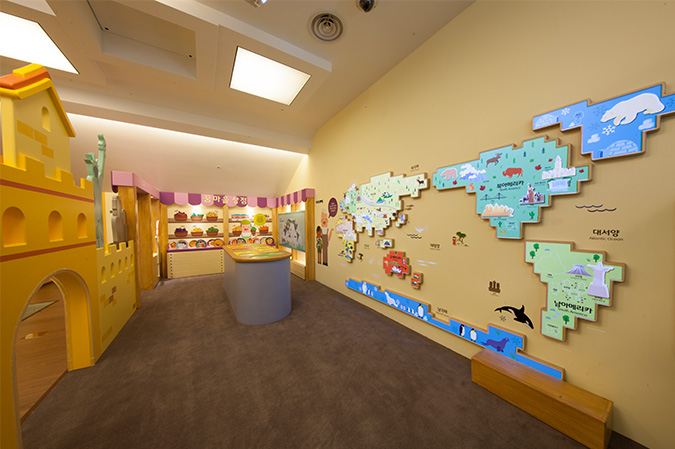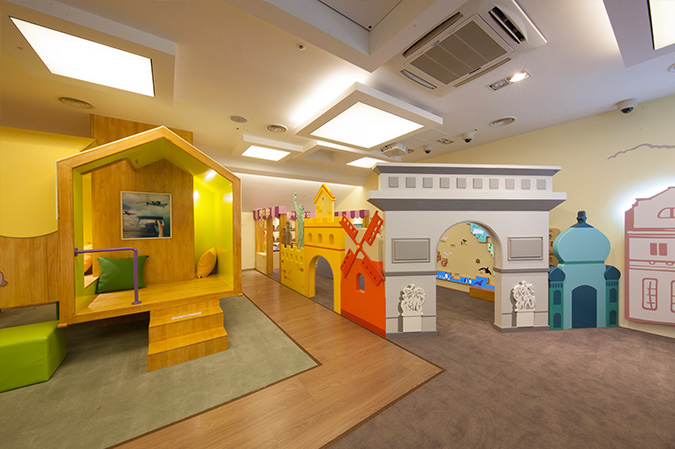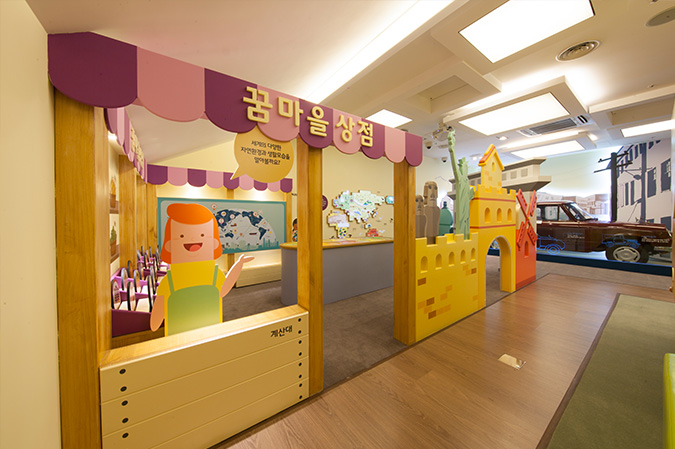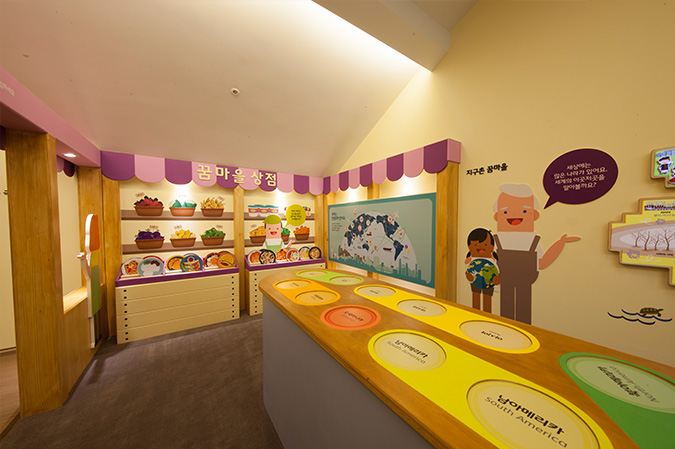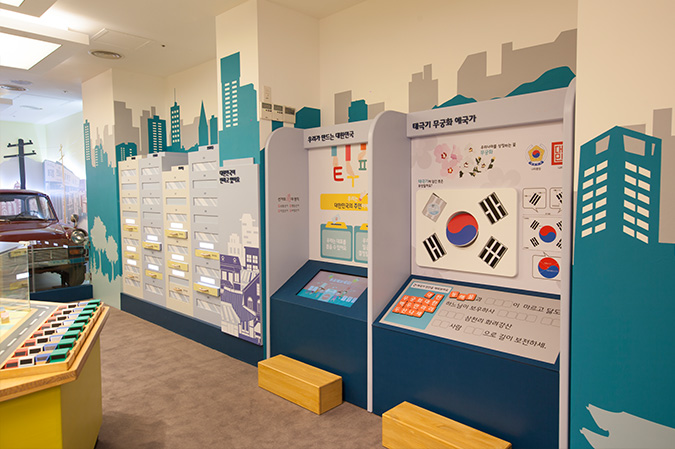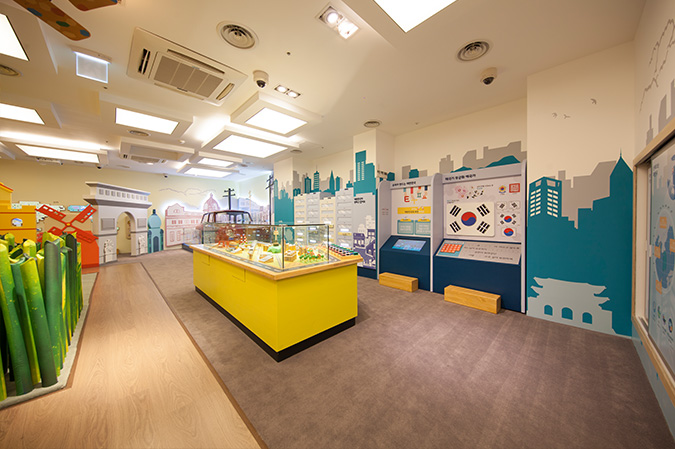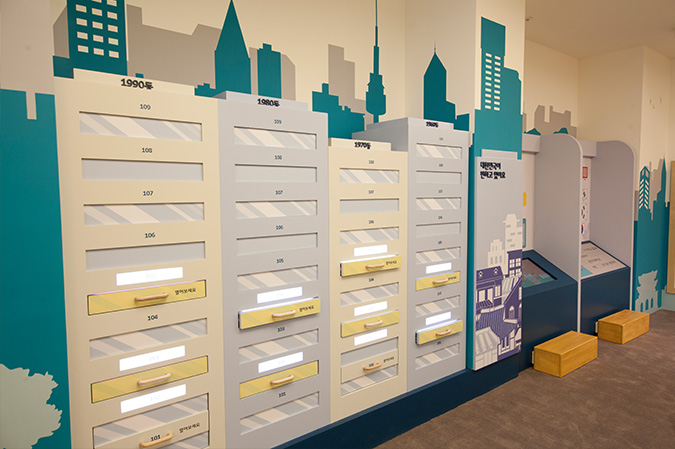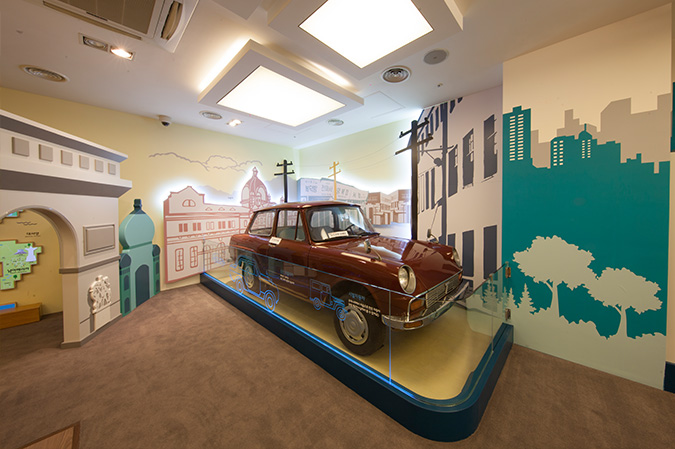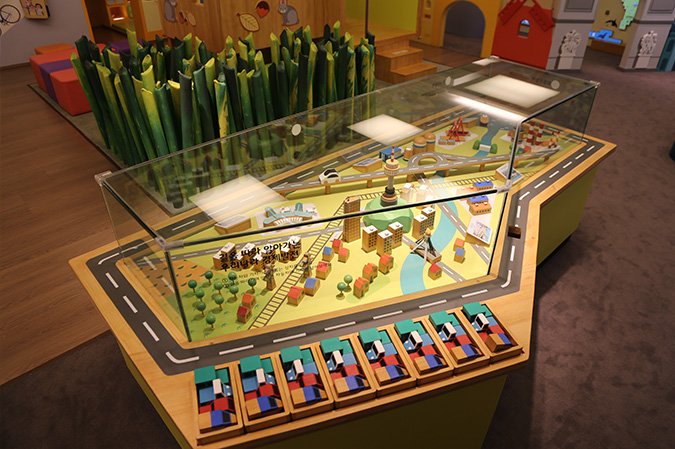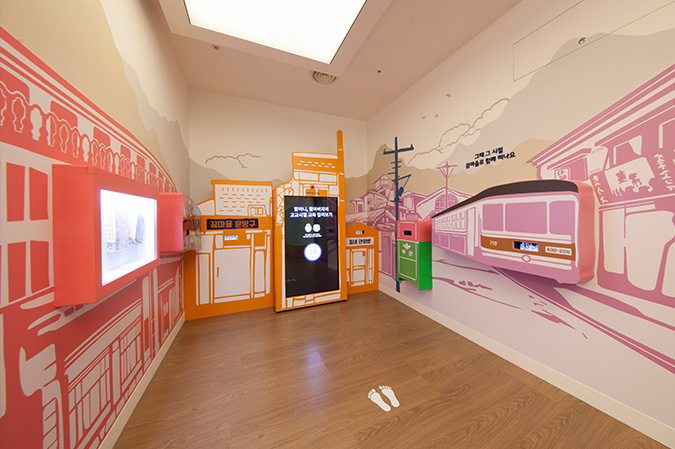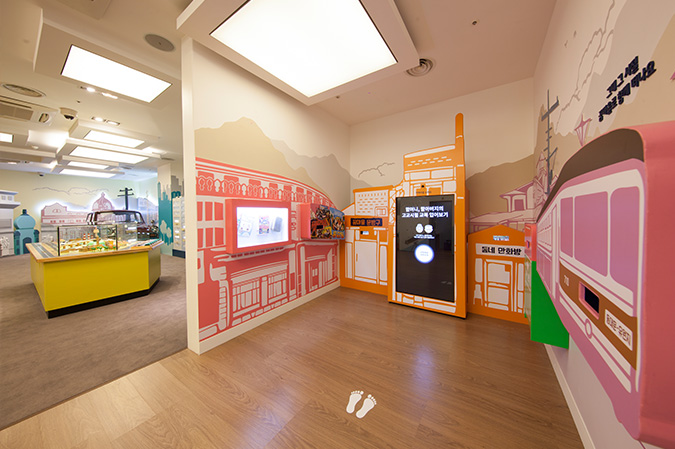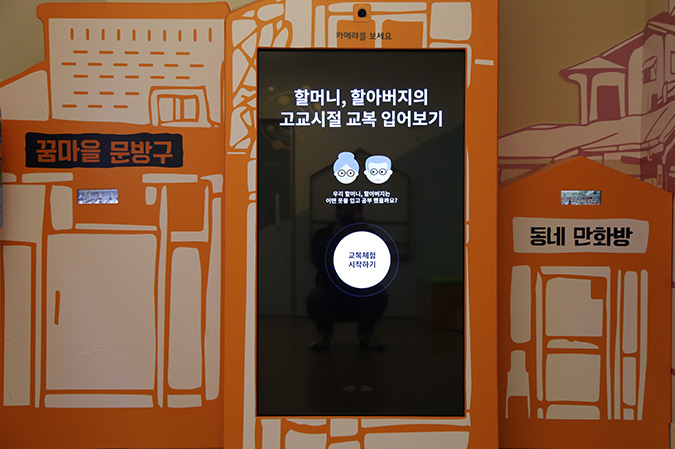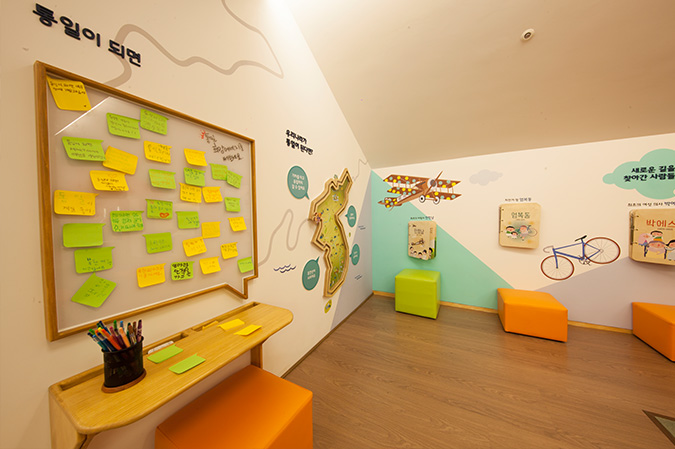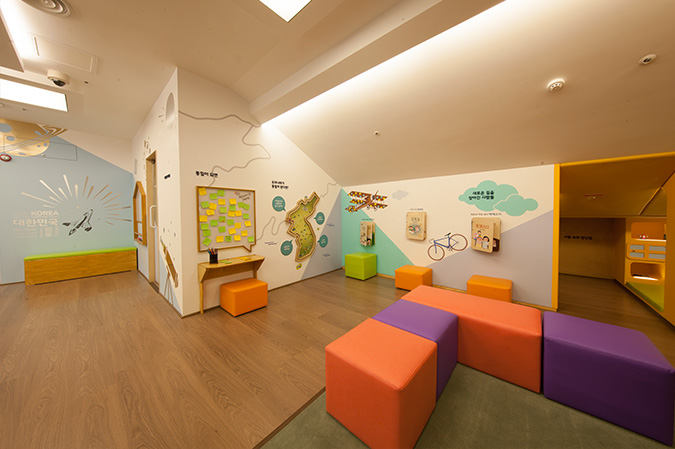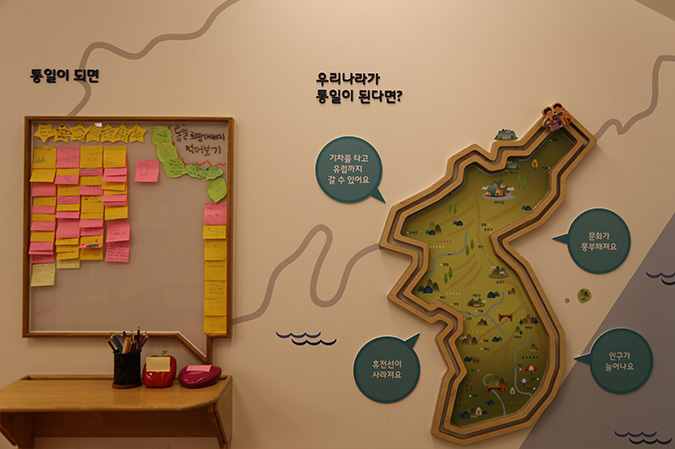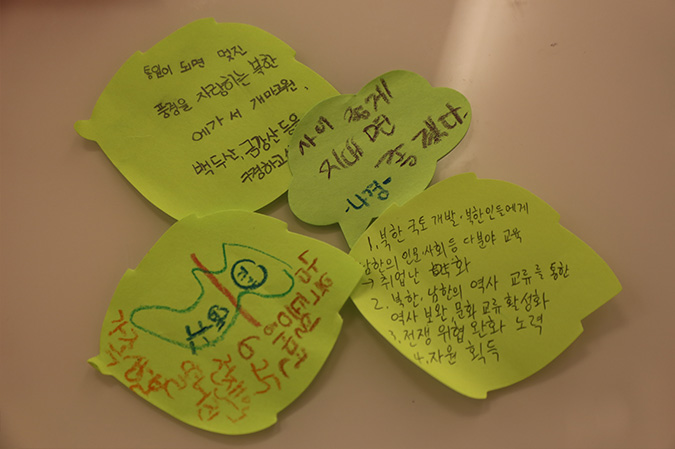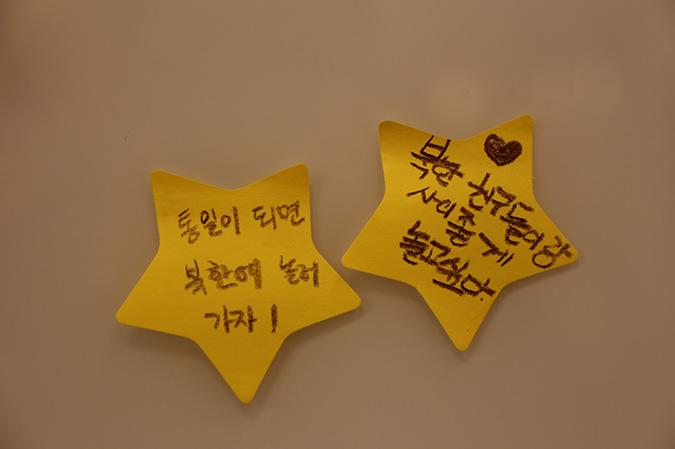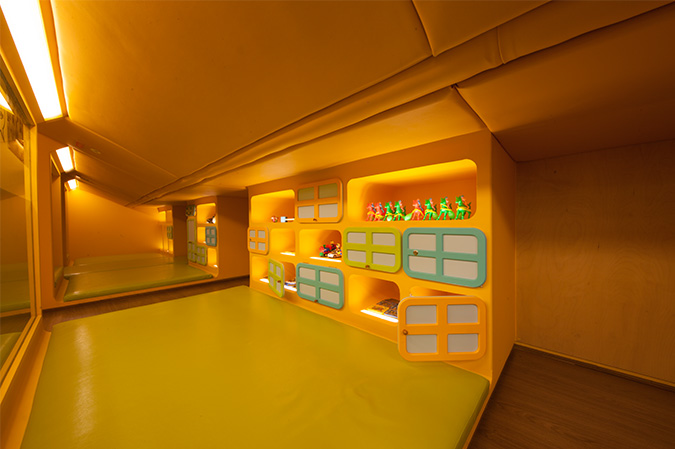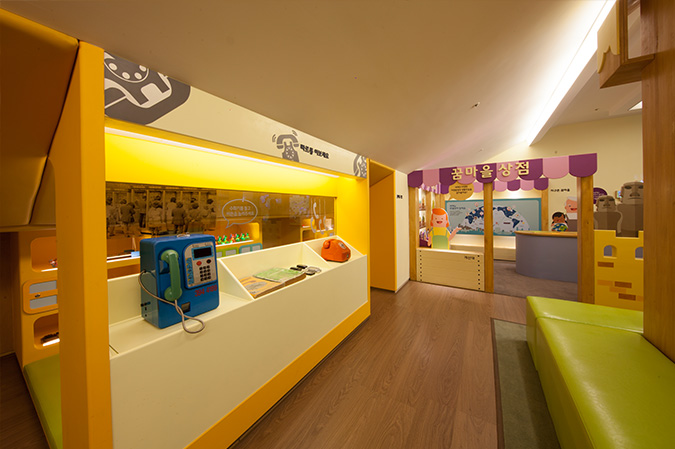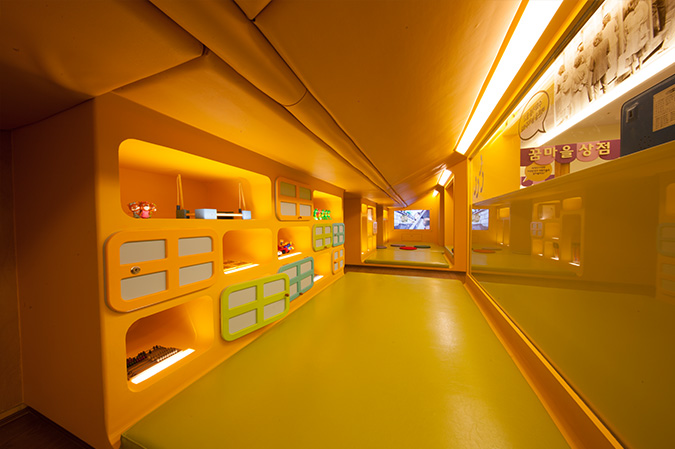Permanent Exhibition
 > Exhibitions > Permanent Exhibition
> Exhibitions > Permanent Exhibition
Draws visitors into the history of the Republic of Korea.

'Exhibition Hall 1: Prelude to the Republic of Korea (1876-1948)' covers the period from when Korea opened its ports to foreign countries to when the nation was liberated from Japanese colonial rule.
At the entrance of Exhibition Hall 1, the prologue video takes visitors from space to earth and then to the Korean Peninsula. The satellite image of the Korean Peninsula is rendered bright with the sound of palpitating heart. The northern, southern, eastern, and western ends of Korea's territories—e.g., Mt. Baekdu (northern end) and Dokdo (eastern end) —are displayed with the Korean national anthem playing in the background. The video closes with the earth in the center transforming into Taegeukgi (Korean national flag). The video is designed to offer visitors an overview of Korea's key symbols: national anthem, Taegeukgi, and territory.
-
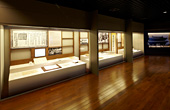
- In the late 19th century, Western ships often appeared in Joseon's coastal areas demanding trade relationships. At first, the Joseon government refused based on closed-door policy. However, in 1876, Joseon opend its doors to the outside by signing the Treaty of Ganghwa (Korea-Japan Treaty of 1876) with Japan. The treaty, actually, was an unequal one, including provisions for extraterritorial rights for Japanese citizens in Joseon and other unilateral Japanese demands. Trade treaties with Great Britain, Germany, Russia, and France followed suit. With its ports’ opening, many western cultures were introduced to Joseon. Modern education was offered at schools set up by the government and Western missionaries, and Joseon adopted Western architecture infrastructures such as electric power, telephone, telegraphic, traffic, postal, and financial systems and institutions.
-
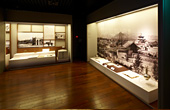
- Top government officials and leading intellectuals founded the Dongiphyeophoe (Independence Club) to free Korea from its dependence on foreign powers and designated the construction of Dongnimmun (Independence Gate) and Dongnip Park (Independence Park) as the association's inaugural project. King Gojong, who witnessed the assassination of Empress Myeongseong (also known as Queen Min), took refuge at the Russian legation in Seoul. The pro-Russian leaning of the Joseon government was thus established. Calls grew for Joseon's independence and King Gojong's return to the royal palace. After around a year at the Russian legation, King Gojong returned to the palace and proclaimed the founding of Daehan Jeguk (Great Han Empire) and assumed the title of emperor.
-
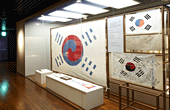
- On display are historically significant Taegeukgis (Korean national flags), from Denny Taegeukgi—the oldest surviving Taegeukgi—and a Taegeukgi signed by Kim Gu (upper right) to the Taegeukgi of the Gwangbokgun (Korean Liberation Army).
-
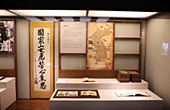
- This calligraphic work by An Jung-geun was presented by An to Yasuoka, an inspector at Lushun (formerly called Ryojun or Port Arthur) Prison where An was imprisoned after his assassination of Ito Hirobumi, the Japanese Resident-General of Korea. The piece, which used to be housed at the An Jung-geun Memorial Hall, has been put in the Museum's care. The calligraphic work is Treasure No. 569.
After the Russo-Japanese War, Korea was recognized as part of Japan's sphere of influence by the great powers, including Great Britain, the United States, and Russia. In 1905, Japan forced Joseon to sign a treaty that took away Korea's diplomatic sovereignty (Eulsa Treaty, Korea-Japan Treaty of 1905). Jang Jiyeon condemned the treaty in an editorial in Hwangseongsinmun (Capital Gazette) entitled 'I Wail Bitterly Today.' Min Yeonghwan and Jo Byeongse took their own lives as an act of protest. With the loss of diplomatic sovereignty and Japan's growing interference in Korea's internal affairs, the Patriotic Enlightenment Movement took place and righteous army mobilized to safeguard Korea's sovereignty.
-
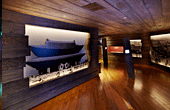
- The narrow passageway and low ceiling are spatial representations of the oppression and exploitation under Japanese colonial rule, while barriers and obstacles symbolize the overwhelming trials and tribulations of the period. The artifacts in this section document the times under Japanese rule, from how Koreans were forced to take on Japanese names to how they were forcibly mobilized as soldiers, laborers, and comfort women.
-
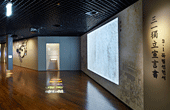
- In the March 1 Independence Movement section, the interactive moving text display facilitates the understanding of the central ideas of the March 1 Declaration of Independence, which are equality, co-existence, independence, freedom, and peace.
-
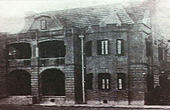
- The actual artifacts and supplementary video footage here offers an overview of the movement of the Provisional Government of the Republic of Korea as well as other domestic and overseas independence movement efforts.
'Past and Present in Photographs' presents a comparison of today's Korea with colonial Korea, drawing visitors into the history time travel.
-
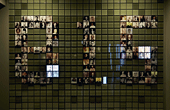
- '8.15 Liberation' is comprised of the photographs of patriots who had sacrificed their lives for Korea's independence. The photographs are arranged to form the numbers 8 and 15, which stand for August 15, Korea's Liberation Day. For the patriots whose photographs are not included, their photos and names are displayed in video format.
-
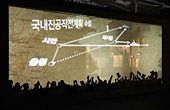
- '8.15 Liberation' is a video documentary of the step to the liberation. The special video display system comprised of two overlain screens enhances the three-dimensionality and dynamism of the projected footage.
-
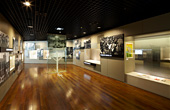
- After liberation, Korea put under the influence of the Cold War rivalry between the Western bloc and the Eastern bloc. Korea was divided along the 38th parallel. This section showcases a sign for the 38th parallel and a demarcation line on the floor representing the 38th parallel. Photographs and artifacts on the right and left are chronicled the sequence of events in South Korea and North Korea, respectively.

'Exhibition Hall 2: Foundation of the Republic of Korea' covers the period of the foundation of the Republic of Korea and the Korean War.
The exhibit is comprised of the following sections: ‘Establishment of the Republic of Korea’s Government,’ ‘The Korean War and Postwar Recovery,’ and ‘Building the Foundation of a Nation-State.’
Sweat and Tears of the people who built the foundation of the national development without losing hope even in the ruins of the Korean War
‘Foundation of the Republic of Korea’ features the development and significance of the establishment of the ROK government, the development process and brutal reality of the Korean War, and the process to build the postwar nation from the ruins of the Korean War. In addition, it covers the significance of the April 19 Revolution, which was the foundation of the democratization movement that overthrew the dictatorship with the power of citizens.
-
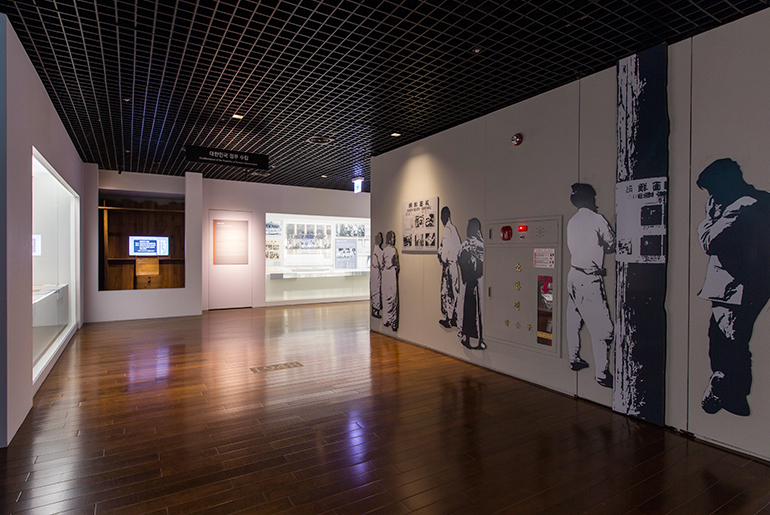
- In the international order of the Cold War confronting the Free World and Communism after World War II, South Korea and North Korea came to have different systems. It was also ultimately decided that a general election would be held only in the South. The general election on May 10, 1948 was the first democratic election held in Korea wherein all men and women over 21 years old were given the right to a direct, equal, confidential, and free vote.
-
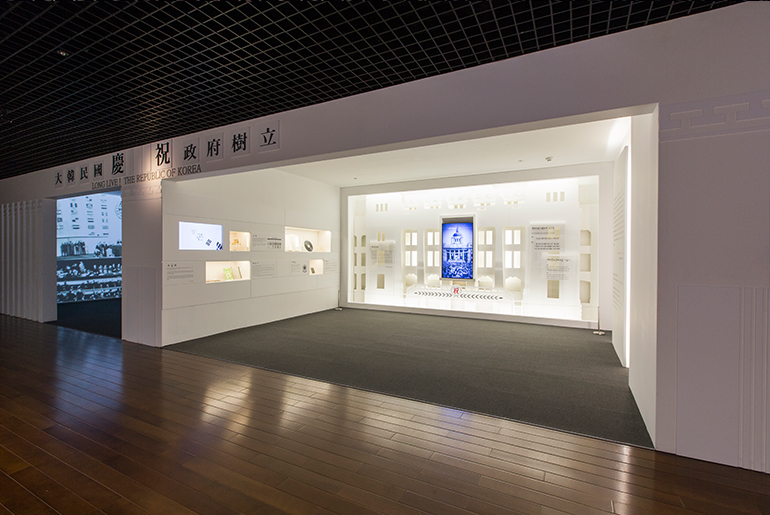
- The first National Assembly elected by the general election held on May 10, enacted and promulgated the Constitution, and elected the president and vice-president. The Government of the Republic of Korea was finally established on August 15, 1948. In December of the same year, the UN recognized the South Korean government as a ‘legitimate government that was established in a region where an election was able to be observed’.
-
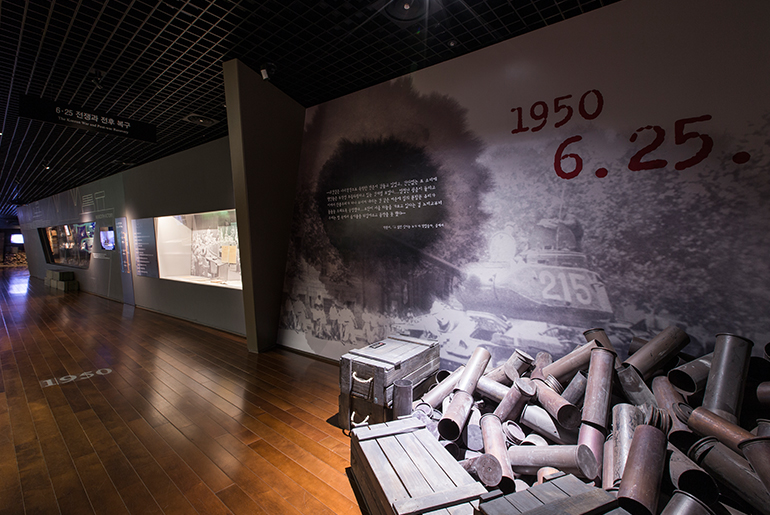
- After the establishment of the government in 1948, Korea was in the midst of building the nation’s foundation. Then on June 25, 1950, the Korean War broke out.
Started with North Korea’s surprise attack on June 25, 1950, the Korean War came to a head along with the participation of UN forces, however, suffered by large-scale Chinese forces. Later, the War reached a deadlock across the front, located around the 38th Parallel, bringing the three-year war to a ceasefire in July 1953.
-
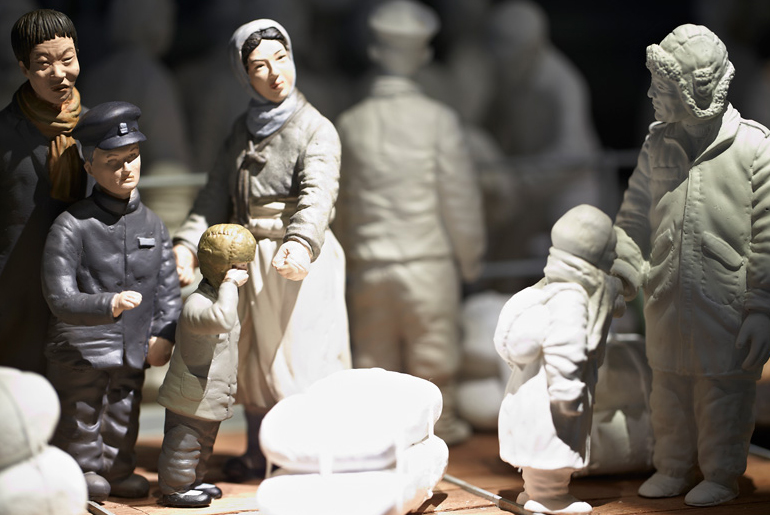
- The Meredith Victory is well-known as the ship carrying many refugees during the evacuation of Heungnam in 1950.
Instead of military supplies, the ship carried over 14,000 refugees for three days to Jangseungpo Port in Geojedo Island. Despite sub-zero temperatures and a lack of food, there was not a single death on board and in fact, five new lives came into the world on the ship. The Meredith Victory made it into the Guinness World Records in 2004 as the largest humanitarian rescue operation by a single ship.
-
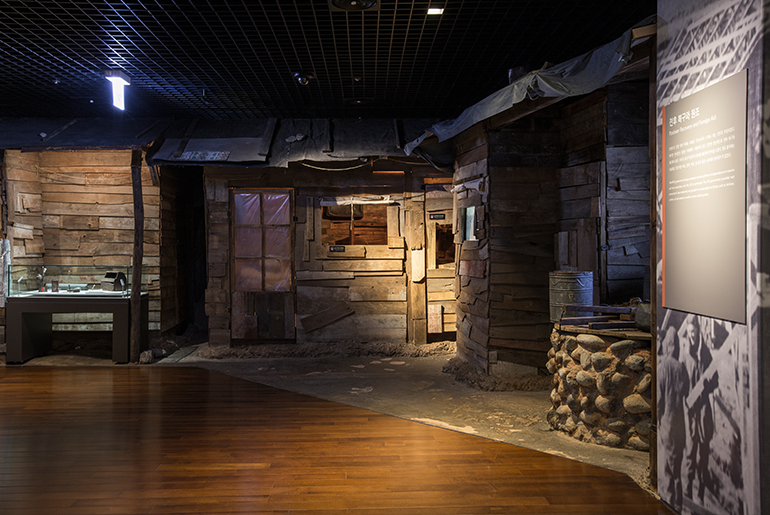
- After the end of the Korean War, numerous Koreans had very difficult living conditions. Especially in Seoul, where many houses were destroyed by heavy bombardment during the war, many people defected from the North after the war and farmers came to Seoul causing a severe a shortage of houses. New migrants gathered around hills or streams, building shacks with planks and tents, and formed giant shanty towns. The residents of the shanty towns survived the difficult life with their strong will and vitality.
-
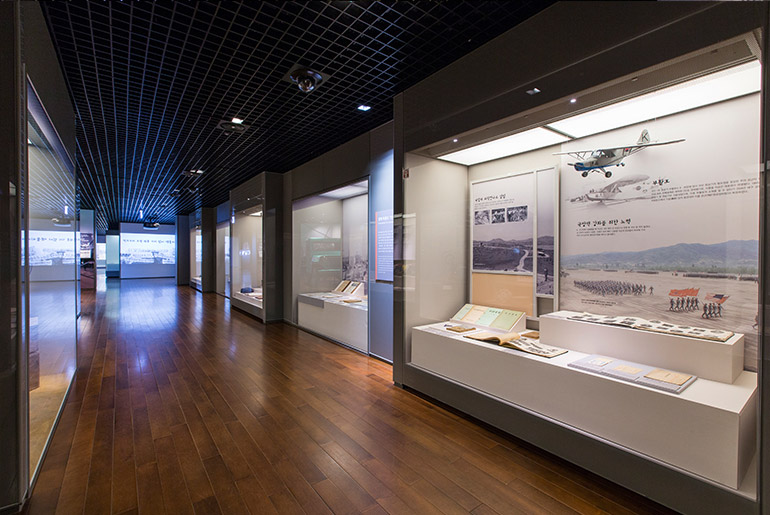
- After the end of the Korean War, Korea signed a ROK-US mutual defense treaty with the United States.
Under this treaty, two US army divisions were deployed between Seoul and the Military Demarcation Line (MDL) to restrain a North Korean invasion of the South. Moreover, the number of ROK armed forces has increased to 720,000 from 550,000 at the time of the armistice, and the education and training programs for commissioned officers have been reinforced.
-
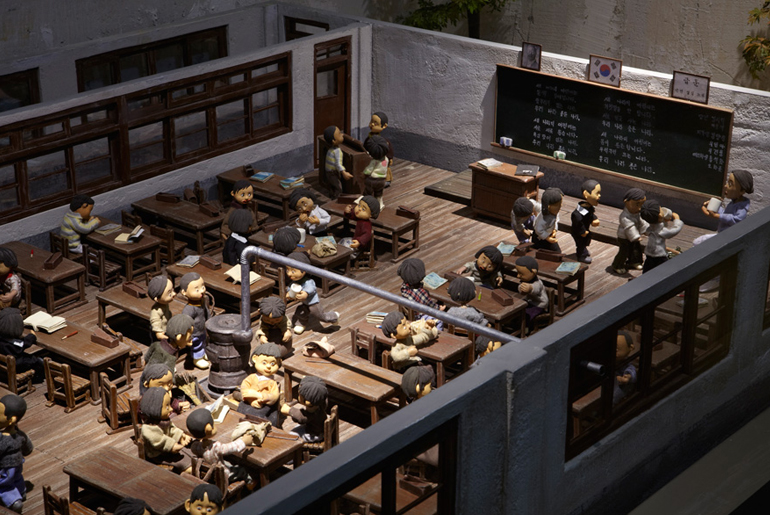
- Since its establishment, the Republic of Korea created a compulsory elementary education system as the basis of the nation’s education.
By the late 1950s, 96% of school-aged children were enrolled in elementary schools, and different schools were newly built and expanded.
The human capital accumulated in the 1950s came to serve as the foundation for Korea’s industrialization and democratization in the 1960s.
-
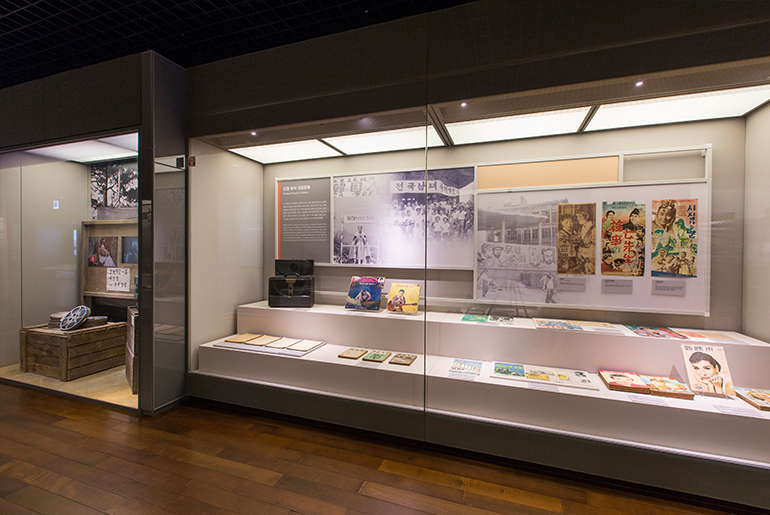
- Korean popular culture after the Korean War often expressed the tragedy of war and the pain of separation, or despair and self-deprecation in tough living conditions. Popular songs expressing the pain of the loss of hometowns and separation, and the misery of the war gained popularity. Both Korean and foreign movies depicting the reality of Korea increasingly became popular in theaters. Many cultural magazines such as Sasanggye (the Realms of Ideas) were mainly read by intellectuals.
-
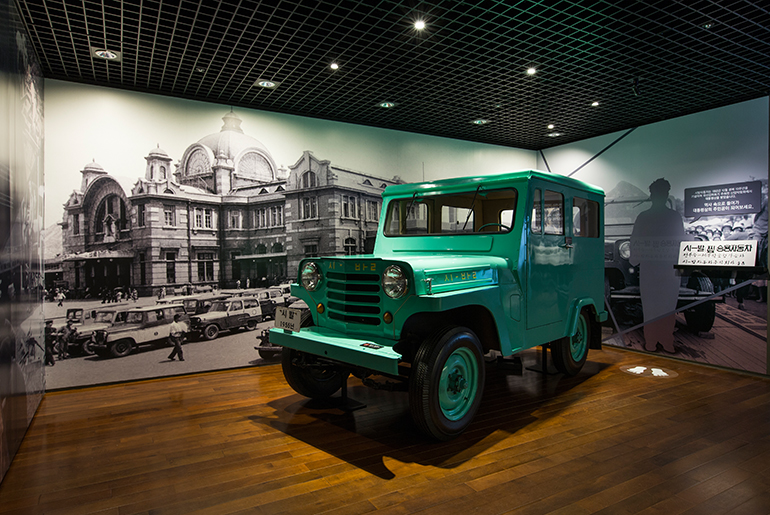
- The Sibal (lit. ‘start’) Car refers to the first motor vehicle made in Korea in August 1955. After the war, recycling of parts from destroyed vehicles to make a car was actively being carried out. Choi Mu-seong and his two brothers produced the Sibal Car by combining newly cut domestic parts with US military jeep accessories. The Sibal Car was awarded the Presidential Prize as the best domestic product at the Industrial Exhibition in October 1955. Sibal is also well-known as a taxi used at that time.
-
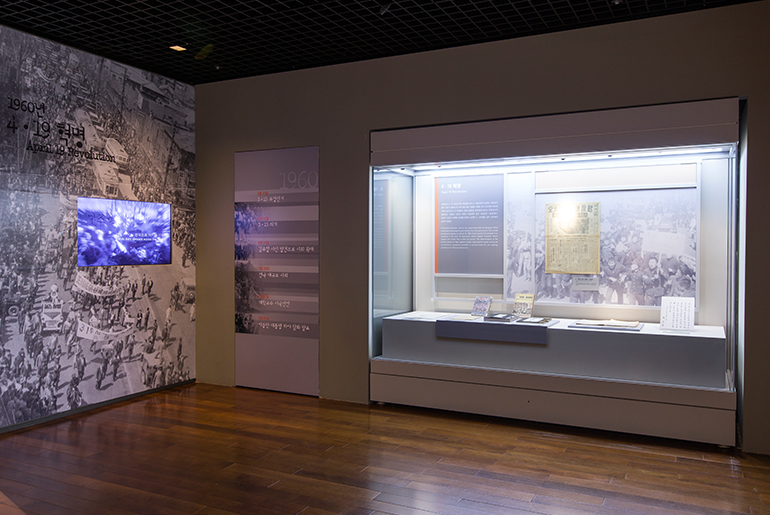
- A corrupt presidential election on March 15, 1960, sparked the people’s fury, resulting in a nation-wide demonstration. In the process, there was bloodshed, in which about 180 people were killed by the police firing. As students and citizens continued demonstrations, President Syngman Rhee resigned. The April 19 Revolution, in which people strictly judged the corruption and dictatorship of the regime, became the cornerstone of democratization in Korea.

'Exhibition Hall 3: Development of the Republic of Korea' chronicles Korea's economic growth and related advances.
The exhibit covers the period from the 1960s to 80s, when Korea experienced stellar economic growth and the diversification of popular culture. The Korean people's level of social, political, and cultural consciousness advanced, and the democratization movement reached its peak.
-
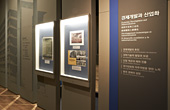
- The Museum and the U.S. Embassy are twin buildings built in the 1960s. They are symbols of Korea's economic growth and contemporary history. The Museum building was once home to the Supreme Council for National Reconstruction and the Economic Planning Board, the fountainheads of Korea's economic growth. On display are papers pertaining to the twin buildings' dedication ceremony in 1961.
-
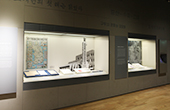
- The rapid economic growth of Korea achieved in such a short amount of time owes itself to government-led economic policies—e.g., series of five-year economic development plans, heavy chemical industry promotion policy—and the Korean people's diligence and hard work. This section features historical materials on economic development plans and export promotion policies.
-
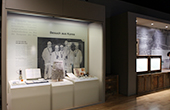
- The 'Korean Workers Overseas' section, comprised solely of donated pieces, provides a glimpse into the lives led by miners and nurses dispatched to West Germany and workers dispatched to construction projects in the Middle East. With artifacts such as the paystubs, wire transfer receipts, diaries, and photo albums of miners, the section is aimed at showcasing the diligence and perseverance of Korean overseas workers.
-
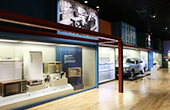
- The section's themes—i.e., 'Korea's First' and 'Making the Impossible to Possible'—are architecturally articulated in the H-beam and container motifs incorporated into the exhibit space. On display are the first Korea-made radio and own model car. The section also covers Korea's electronic, automobile, shipbuilding, and steel industries as well as the construction of Gyeongbu Expressway. Pony was Korea’s first original model car, made by Hyundai Motors. It was exported to New Zealand in 1982.
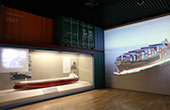
- The miniature replica here is the Atlantic Baron, the first oil tanker for which Korea obtained a shipbuilding bid and also the first-ever oil tanker the nation produced. The section also features the anecdote about how founder of Hyundai Chung Ju-yung won a bid for two ships from a Greek shipping company by telling the story of the turtle ship on the 500-won bill. This section's video presentation contains how the Hyundai Mipo Dockyard in Ulsan was built along with the Atlantic Baron.
-
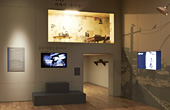
- On the flipside of economic growth were dire labor conditions. The recreated interior of a garment factory from the period is aimed at presenting a palpable experience of a typical laborer's life, which would have comprised of 14-hour workdays in front the sewing machine in a dusty, low-ceilinged factory and nights spent in a small second-floor attic. The section's video is about Chun Tae-il and the history of Korea's labor movement.
-
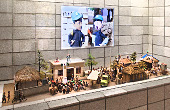
- Saemaeul Movement (New Village Movement) is presented as a clay animation video to make the subject more accessible to children and teens. The video features a fun storyline that facilitates the understanding of diligence, self-help, and cooperation, which make up the spirit of Samaeul Movement.
In the display case across the clay animation corner are diverse artifacts related to the Samaeul Movement, including a radio that the president presented to the leaders of the movement.
-
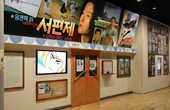
- This section has diversification and popularization of culture as its theme. Through the artifacts and video here, including an interesting Daehan News clip on culture, visitors can learn about the period's pop culture, from cinema and music to sports and fashion.
-
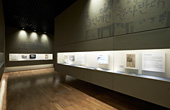
- The section on the democratization movement starts with poet Kim Ji-ha's 'With a Burning Thirst.' Artifacts, video, and photographs document the process and flow of the democratization movement from the 1960s to 80s. The dim lighting and long row of display cases are meant to symbolize and underscore the significance of the democratization movement and the sacrifices that ultimately led to Korea's democratization.
-
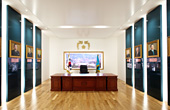
- The final section of Exhibition Hall 3 is devoted to the presidents of the Republic of Korea. Visitors can see plaques containing the portraits and tenures of Korea's presidents and through monitors learn about their achievements and activities. Visitors can take pictures at the replicas of the presidential work desk and podium and enjoy a spectacular view of Gyeongbokgung Palace, Blue House, Mount Bukhan, and Mount Inwang through a window designed to look like a giant frame.

Fourth exhibit, entitled Korea’s Advancement, a Leap to the World, covers the period of 1987 to present.
Through economic growth and democratization the foundations of what was to come next were laid. In a period generally characterized by deepening globalization, South Korea has become increasingly confident on the world stage. At the same time, the issue of peaceful unification has remained a major concern.
-
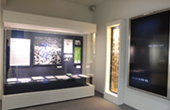
- The continued activities of democracy activists, who had coalesced around the Citizens Movement for a Democratic Constitution, combined with a general movement in society for democracy. The ruling group thus had no choice but to accept their demands, and with the Declaration of 29th June, democratic elections were instituted. Following this, an amended constitution drawn up with bipartisan support was put to the electorate and approved by an overwhelming margin. With this, voters were given the chance to elect their own president for the first time since 1971 - it had been 16 years. People power had ended authoritarian rule, and the 1987 Democratic Struggle became the first step toward the establishment of a political system that reflected the will of the people.
-
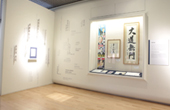
- Constitutional amendments confirmed by the referendum included a directly-elected presidency. Thus, elections were held in December 1987. Attempts were made to unify opposition parties around a single candidate for the presidency. But in the election it was Roh Tae-woo, candidate for the ruling party, who won, presenting himself as a ‘normal person’ and ‘the candidate of stability’. Following the institution of direct presidential elections, new laws were put in place and old laws amended, including the Political Relations Act, the National Assembly Relations Act, and the Regional Autonomy Act, to expand the avenues of political participation for the citizen.
-
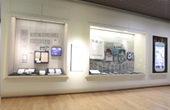
- As political freedoms were claimed, there were growing calls for the expansion of basic rights. Moves were made to expand worker protections and freedom of the press, while a Constitutional court was set up to protect the basic rights granted by the constitution. Public hearings were held to root out corruption, while Hana Hwae (The Group of One) – a powerful secret organization inside the military – was dissolved, and a financial reform that required that bank accounts be registered under the actual names of account holders was introduced. A properly democratic system has emerged, the powers of the National Assembly have been enhanced, and with the introduction of open elections and expanded powers for regional governments, more opportunities have opened up for civic engagement in the political process. The growing popularity of Social Networking Services (SNS) has also directly affected how the people participated in the political process.
-
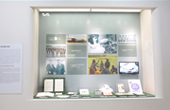
- South Korea’s relations with the outside world also underwent changed dramatically in the late 1980s as the Cold War ended. Through a policy of Nordpolitik, beginning with Hungary, relations with socialist countries were normalized. South Korea also became an aid donor, having been an aid recipient, beginning with the provision of funds to the UN. At around the same time, it began to participate in peacekeeping missions in areas of conflict. The country has taken a leading role in forging consensus within international institutions on a variety of issues including nuclear security.
-
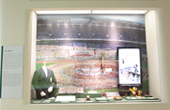
- Sports have historically given confidence and raised the profile of the country worldwide. In 1936, the triumph of Son Gi-jeong in the marathon at the Berlin Olympics awakened national pride even amidst the sadness of having lost national independence. At the London Olympics in 1948, Korea participated as an independent state for the first time. The 1988 Seoul Olympics was an opportunity for South Korea, a country that had suffered the tragedy of the Korean War, to demonstrate its powers of determination. South Korea co-hosted the World Cup with Japan in 2002. The country was able to show the world just how far it had developed, not only by reaching the semi-finals but also with the enthusiasm of fans.
With the hosting of World Athletics Championships in Daegu in 2011, and plans to host the Winter Olympics in Pyeongchang in 2018, South Korea will become only the fifth country in the world to have hosted all four major sports competitions.
-
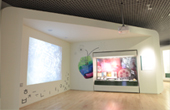
- Since the early 1990s, Korean TV shows have become increasingly popular in Asia. The so-called ‘Korean Wave’, interest in Korean mass culture, has also now spread to other parts of the world, including Europe and Latin America.
The Korean Wave has gained momentum and spread quickly through the internet and SNSs. Interest in a wide range of things Korean, including the Korean alphabet and Korean products, continues to become more widespread. Dynamism, joy and harmony, basic sentiments that undergird Korean culture, came to be expressed through new mediums imported from the West, creating new kinds of culture that people from all over the world can appreciate. As a result, Korean Wave is contributing to global cultural diversity.
-
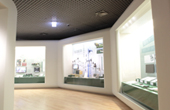
- The shared efforts and sacrifices of the people, government and corporations were needed to overcome the economic crisis of the late 1990s known as the Asian Financial Crisis. The movement to donate gold to pay off foreign loans was symbolically powerful.
Corporate restructuring enabled economic modernization, but it also led to new problems, including worsening social inequality and unemployment resulting from greater flexibility in the labour market.
While overcoming the crisis, Information Technology became a key engine of growth. The IT industry continues to break records, often being ‘the first and the best’ and leading the way worldwide. There has also been much change in the world of leisure and in the enjoyment of culture. With the growth of the IT industry and the development of design technologies, e-sports and other leisure activities that utilize digital photography have become popular. There are also an increasing number of works, including novels, films and TV series that have been created with direct audience participation via the internet.
-
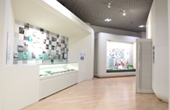
- Today, there are 7 million Koreans living overseas in 170 different countries. In the early 20th century, Koreans left the country for Hawaii in order to escape Japanese colonial exploitation and poverty. In the mid-20th century, state-led migration and settlement led to increasing middle class emigration. Koreans living overseas, with particular ingenuity, have lived model lives and created roots. At the same time, with the growing pace of globalization, national borders are becoming less meaningful, while national bonds are becoming more important. Koreans living abroad are a face of the nation abroad as well as a bridge for country to reach out to the outside world. Working with Koreans living overseas will become a powerful force in the development of the national community.
-
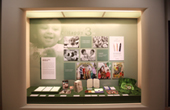
- As of 2014, there were 1.75 million foreign nationals living in South Korea. Since the late 1980s, the number of foreign migrant workers and marriages to foreign migrants has increased markedly, resulting in the gradual emergence of a multicultural society.
Ethnic nationalism has been a key element of Korean identity for long time, but with the advent of a multicultural society, values of mutual understanding and cooperation have rapidly begun to emerge.
Immigrants to South Korea, while maintaining their own cultural identities, need to make efforts to adapt to Korean society.
-
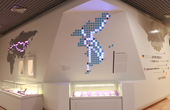
- Since the late 1980s, North and South Korea have begun to see one another as partners rather than as antagonists. Beginning with the 7th July Declaration of 1988, and culminating in two summits between the leaders of the two Koreas in the 2000s, many efforts have been made to create a cooperative relationship between the two sides. Such efforts have resulted in the creation of a tourist resort at Mount Geumgang, an Industrial Zone in the North Korean city of Gaeseong, and many exchanges between civic organizations. But the North Korean nuclear issue, the Battles of Yeonpyeong and the sinking of the Cheonan mean that conflict between the two Koreas remains a reality.
Since division, relations between the two Koreas have been characterized by conflict and tension, exchange and cooperation, but also the pain of families separated. In the sphere of inter-Korean cooperation, sports have had a positive influence, and valuable experiences have also been had. Peaceful unification will be a hugely progressive step for the future of the Korean peninsula.

'Video Chronicles of the Republic of Korea' features leading-edge display technologies that enable viewers to see, hear, and feel Korea's modern and contemporary history.
-
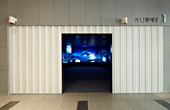
- Cutting-edge display technologies were applied to lead visitors into the key events of Korean history and offer a dynamic overview of Korean politics, economy, society, and culture. The pairing of historical sensibility with digital effects exemplifies what today's Korea is all about.
The Korean History Dream Village is a children’s museum aimed at providing children with learning experiences through story-based exhibits and programs.

- Countries in Global Village
- Visitors to this section are guided to learn more about the cultural heritage in many parts of the world and complete their own map of the world embodying the culture and heritage of the world.

- Republic of Korea, the Nation of Korean People
- Young museum goers visiting this section are given an opportunity to experience various symbols, electoral system, and democracy of the Republic of Korea, and the rapid economic growth the country achieved recently.

- Dream Village At That Time
- Children visiting this section are offered an opportunity to learn about the times when their parents were young through a collection of photographs from the 1950s to the 1980s capturing the lives of Korean people.

- Future of Korea and Children’s Dream
- Children visiting this section are given an opportunity to think about their dreams through the stories of three famous figures from Korean modern history, and leave a message of hope for a Unified Korea in the future.

- Children’s Experience Space
- This section of the museum helps children learn about the childhood of their parents with a hands-on experience of old toys and animations.
